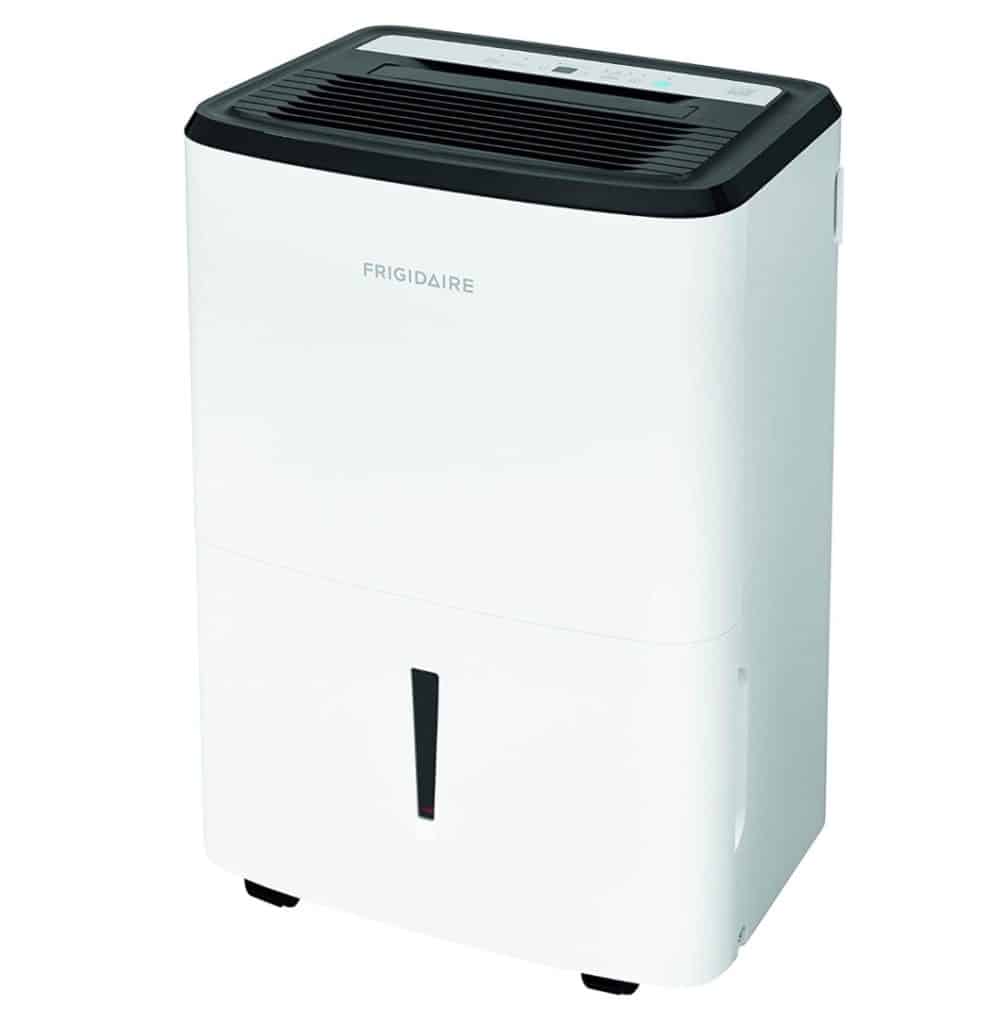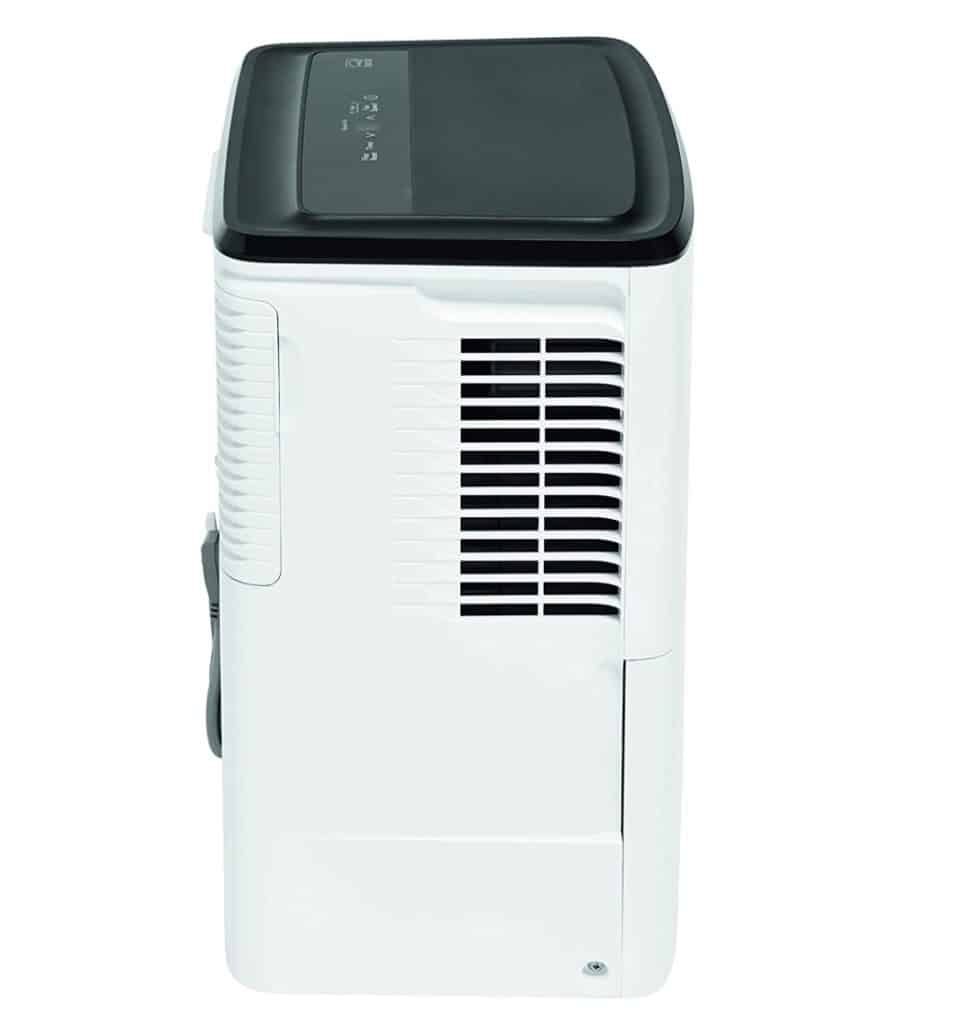Most basements are below ground, which means dampness tends to be unavoidable. This is best battled with a dehumidifier, but which is the best one for your home?
How To Choose A Dehumidifier
Choosing a dehumidifier isn’t as easy as just going down to Home Depot a picking out the first model you see. This, of course, isn’t a terrible method as any dehumidifier is better than none, but if you want to get the best possible one for your basement, a little research can go a long way.
First of all, figure out the size of your basement. Multiple the length by the width and you’ll know the square footage. Most basements have 8-foot ceilings, but if yours is taller than that, take it into account when sizing your dehumidifier.
Next, assess the wetness of your dehumidifier and determine the amount of water you’ll need to pull out of the air. This is rated in pints per day. This Energy.gov data will help you determine the power level of dehumidifier you need.
| Condition | 500 | 1000 | 1500 | 2000 | 2500 |
|---|---|---|---|---|---|
| Damp (damp in wet weather) | 10 | 14 | 18 | 22 | 26 |
| Very Damp (always feels damp) | 12 | 17 | 22 | 27 | 32 |
| Wet (always feels wet) | 14 | 20 | 26 | 32 | 38 |
| Extremely Wet (wet floor, sweating walls) | 16 | 23 | 30 | 37 | 44 |
Once you know the pints per day you need to remove, you will know the power level of the dehumidifier you need.
The next thing you’ll need to determine is if your basement dehumidifier needs a pump or not. The floor of your basement might be below the level of the water exit of your home. It doesn’t matter if it’s to a sewer or septic, if you are below this level you need a pump. Many larger dehumidifiers are sold with built-in pumps, but you’ll likely spend and extra $50 (or so) for this feature, so don’t buy one if you don’t need it.
Now consider the extras. Do you want an Energy Star-certified model? The answer is likely yes, since dehumidifiers use a fair bit of power and they run often. Energy Star means efficient operation, but they come at a price premium. The nice thing about Energy Star though is that your power company will likely give you a rebates. Expect to get about $25 back. Energy Star dehumidifiers are, on the average, about 30% more energy efficient than standard models.
Do you want a connected or “smart” dehumidifier? It’s 2021 so, like anything else, some models have connected apps so you can check in on the unit’s status, and know if the bucket is full, and other features.
Lastly, keep in mind there is such a thing as a portable dehumidifier — that’s what we are talking about here — and whole home dehumidifiers (like the Aprilaire 1870), which is a larger unit and a more significant investment.

High-Power Basement Dehumidifier With A Pump
If you need a powerful dehumidifier with a pump than it’s hard to beat the Frigidaire 50-pint and its high efficiency design. The Frigidaire FFAP5033W1 is a significant investment at around $300, but it has features a-plenty including a digital humidity level display, 3 fan speeds, a washable air filter (non-HEPA), 24-hour timer, and a control lock-out (to prevent kids from tampering).
Of course it has a pump, which adds significantly to the price, but allows water to drain to a hose and the up into a sink or out of a window, instead of into a bucket.
The model is Energy Star certified with a Dehumidifier Efficiency level (Integrated Energy Factor) of 1.8 L/kWh.
At 45 pounds and 12 by 15 by 24 inches this is no small unit, so keep in mind that this is for large and/or wet basements.
This model has replaced the previous model, the FFAP7033T1, which was quite popular and often recommended.

High-Power Basement Dehumidifier Without Pump
If you are able to drop the pump you can save a pretty penny by going with the Frigidaire FFAD5033W1 (note the “D” as the 4th character instead of the “P”). By going pumpless you will save at last $60 and you’ll cut down on the size of the dehumidifier.
The pump is replaced with a low-hassle bucket or a continuous drain which will allow it to drip water into a hose and right down into a sink or drain. All the features as the same as with the FFAP5033W1 but there is no pump to worry about or pay for.

Mid-Power Basement Dehumidifier Without Pump
The Frigidaire FFAD3533W1 is a 35-pint dehumidifier without a pump, making it a great choice for mid-size basements or low-dampness situations. Once again, the pump adds significantly to the cost, but by lowering the size down from 50 to 35 pints some cost savings can be realized. Most savings can be found when you turn this model on because it’s an Energy Star certified efficient one.
The unit is a little bit smaller than the 50-pint model. It’s about 40 pounds and 13 x 16 x 24 inches.
Lower Power Option
If you have a smaller space or bit of occasional moisture than the Frigidaire FFAD2233W1 is the 22-pint model in the same line. This unit will drop the price down to under $200.
FAQs
What are the benefits of a dehumidifier in one’s home or basement?
Top dehumidifiers will effectively limited excess moisture in the air, reducing dampness, smell, mold and mildew. Dehumidifiers will filter the air and unwanted eliminate bacteria in addition to preventing conditions that lead to smelly, damp basements, moldy walls, mildewed carpeting, and other unpleasant conditions.
How do I reduce home humidity without a dehumidifier?
It is possible to have a drier home without a dehumidifier. One way is to improve the drainage arrow your home with gravel or a drywall. Keeping gutters and downspouts clear of the home can be helpful too. Make sure your bathrooms have vents and working fans that lead outside of the house. Also make sure your clothes dryer and in-house air conditioner has a vent that leads outside and is not blocked.
What is a humidistat?
A humidistat that measures the relatively humidity level in a room. Every high-quality dehumidifier has one. It serves to tell the dehumidifier to turn off when the air is sufficiently dry and turn back on when the air has reached a certain moisture level.

